The 7 Types of Starfish
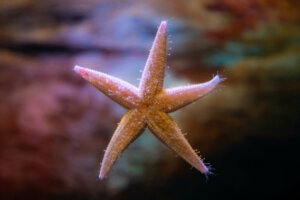

Reviewed and approved by the biologist Samuel Sanchez
Starfish (Asteroidea) are part of the echinoderms, marine animals characterized by an internal skeleton, formed by a pentagonal disk with five arms. This taxon comprises more than 1900 species, distributed in 7 orders or types of starfish, and different families, all with unique characteristics.
Starfish are well known marine species, as they have a very curious way of moving and reproducing. Starfish have the peculiarity of regenerating their arms in most cases and have been used in research in order for experts to understand this behavior. Next up, you’ll meet various orders and species of starfish.
1. Valvatida order
It’s noteworthy that most of the starfish of this order have five arms. These are tubular in shape and feature a row of tube feet and conspicuous ossicles – individual structures. The latter are formations embedded in the dermis, which give the stars greater protection and rigidity.
On the other hand, this order of starfish has pedicellars and paxilas in its structure. A paxila is a structure that’s shaped like an umbrella, whose function is to protect the species of this order, preventing the area where the animal feeds and breathes from being obstructed with sand.
This is one of the most diverse types of starfish, as its specimens are characterized by measuring from a few millimeters to 75 centimeters. Likewise, it’s a very diverse order which has no exact taxonomy, which includes around 14 families and 600 species, within which the following stand out:
- Heterozonias alternatus
- Protoreaster nodosus
- Linckia guildingi
- Diabocilla clarki
- Pentaster obtusatus
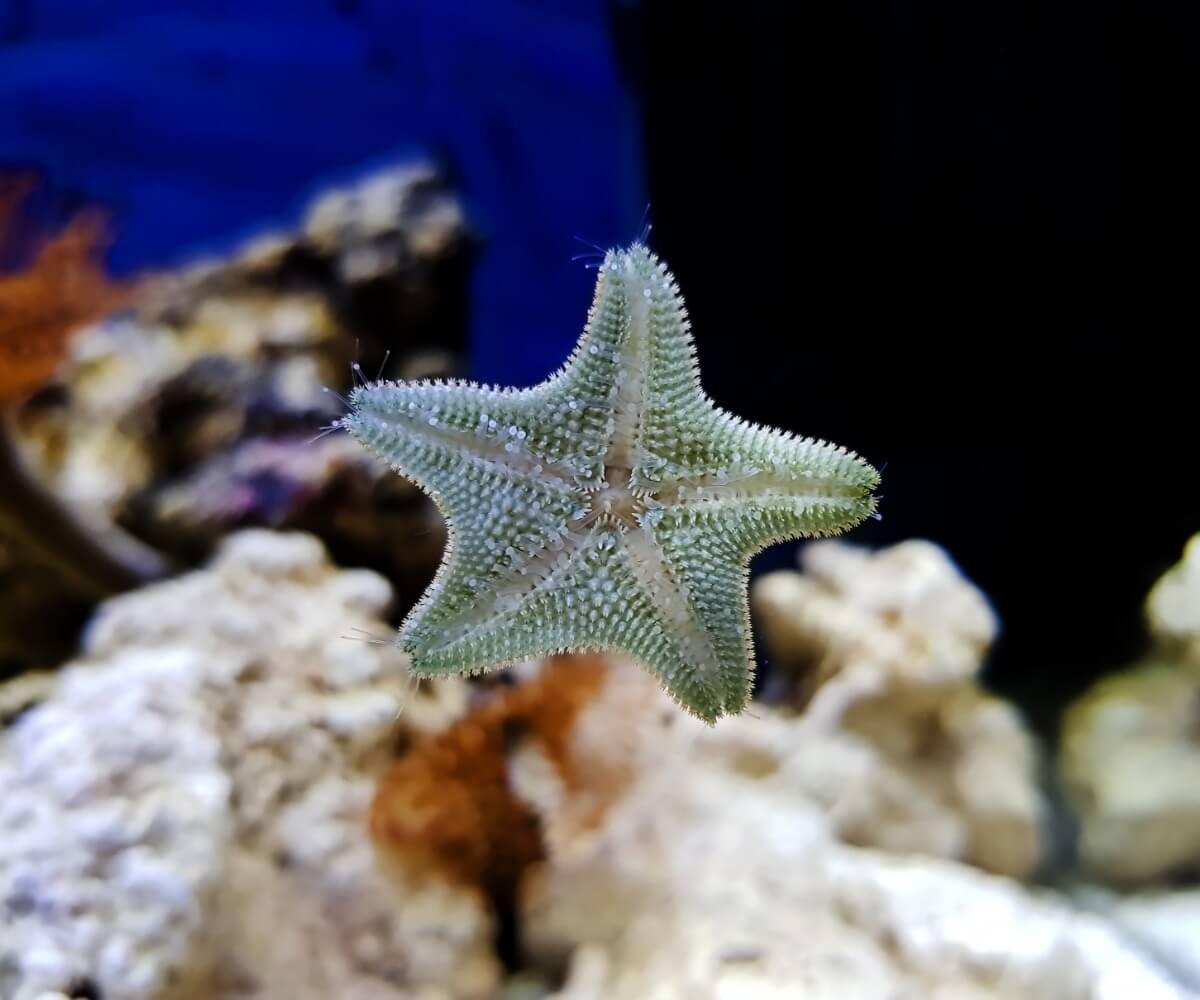
2. Paxillosida order
Another type of star is the Paxillosida order, which is characterized by its species having five or more arms, with which they manage to dig into the sandy bottom of the sea. Physically, these invertebrates have tube-shaped tube feet, which have numerous rudimentary suckers.
Also, the upper skeletal surface of your body has small granule-like structures. We can’t specify a definite depth that this order lives at because that depends on the species; moreover, some specimens can live near the surface. The order Paxillosida is divided into 8 families, 46 genera, and more than 250 species, such as the following:
- Luidia bellonae
- Ctenodiscus australis
- Abyssaster planus
- Gephyreaster Fisher
- Astropecten acanthifer

3. Spinulosida order
The members of this order have relatively delicate bodies and as a distinctive feature they lack pedicellars. The aboral area – opposite the mouth – is covered with numerous spines that vary from one species to another, both in size and in shape and arrangement.
These types of starfish usually have a small disk with 5 rays in a cylindrical shape and the tube feet have suction cups. The habitat of these individuals varies between intertidal zones or deep waters as well as polar, temperate, or tropical regions. This order of starfish recognizes the Echinasteridae family, 8 genera and more than 100 species, such as these:
- Odontohenricia violaceous
- Echinaster colemani
- Rhopiella hirsuta
- Henricia sanguinolenta
- Metrodira subulata
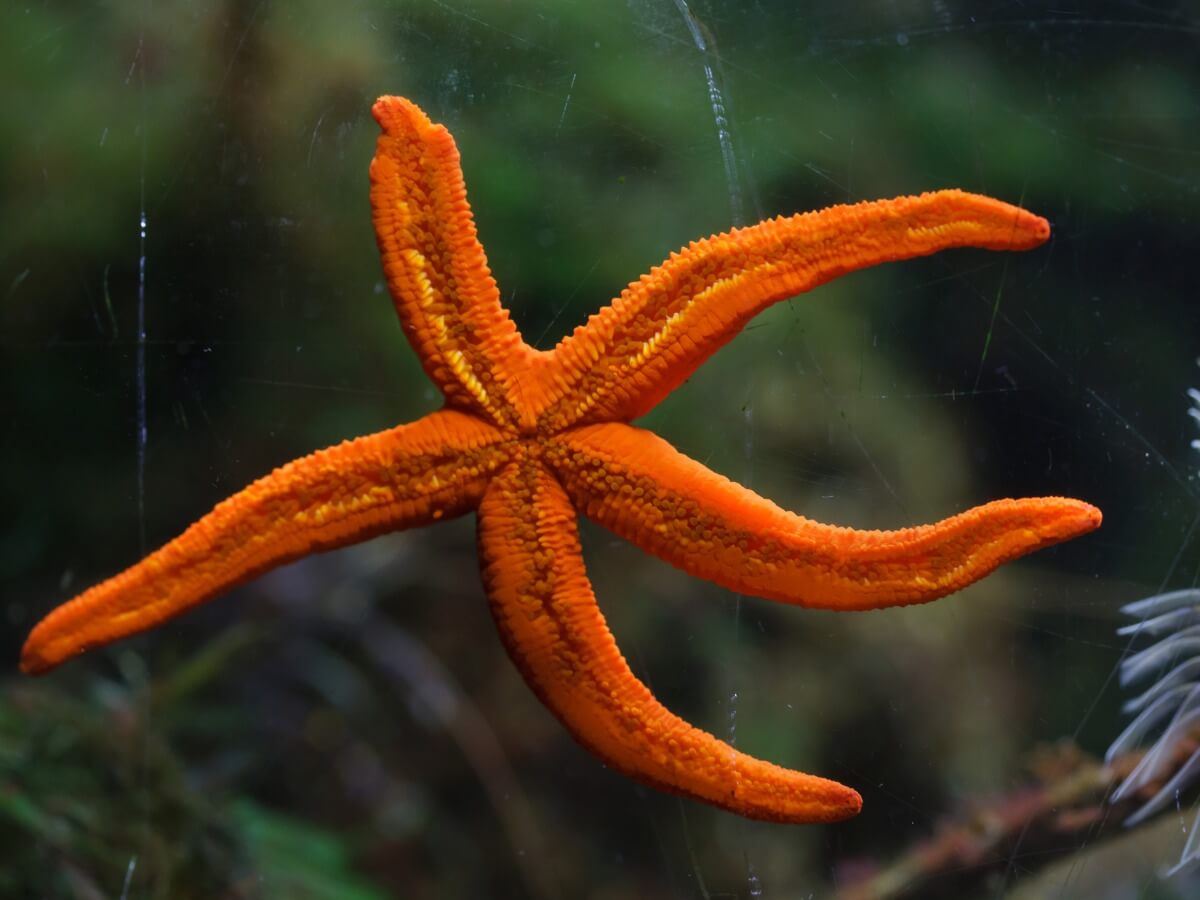
4. Brisingida order
In this order of starfish, we find only those that inhabit the bottom of the seabed, between 1800 and 2400 meters deep. Although they have a presence in different regions, they prefer the waters of the Caribbean, the Pacific Ocean and New Zealand. It is common to find them on cliffs and areas of constant ocean currents.
These starfish feed by filtration, through long arms with needle-shaped spines – they can have between 6 and 20. They also have a flexible disk located in their mouth. The Brisingida order is made up of 2 families: Brisingidae and Freyellidae, with a total of 16 genera and more than 100 species. Some of these are as follows:
- Freyella elegans
- Colpaster edwardsi
- Brisinga endecacemon
- American novodina
- Hymenodiscus coronata
5. Forcipulatida order
One of the easiest types of starfish to identify is the Forcipulatida order which is characterized by the animal’s body having pincer-shaped structures that open and close. These are called pedicellaries and are made up of a short stem, with 3 skeletal parts.
The tubed feet, arranged in the lower area of the body of the starfish, have flat-tipped suckers, which allow the invertebrate to move on the seabed. Its arms are robust, with 5 or more rays. These starfish have a global presence in cold, tropical waters.
The Forcipulatida order is considered to be made up of 7 families, more than 60 genera and approximately 300 species. The common starfish (Asterias rubens ) is one of the best known species and the following can also be found in this group.
- Bythiolophus acanthinus
- Coscinasterias tenuispina
- Allostichaster capensis
- Labidiaster annulatus
- Ampheraster alaminos
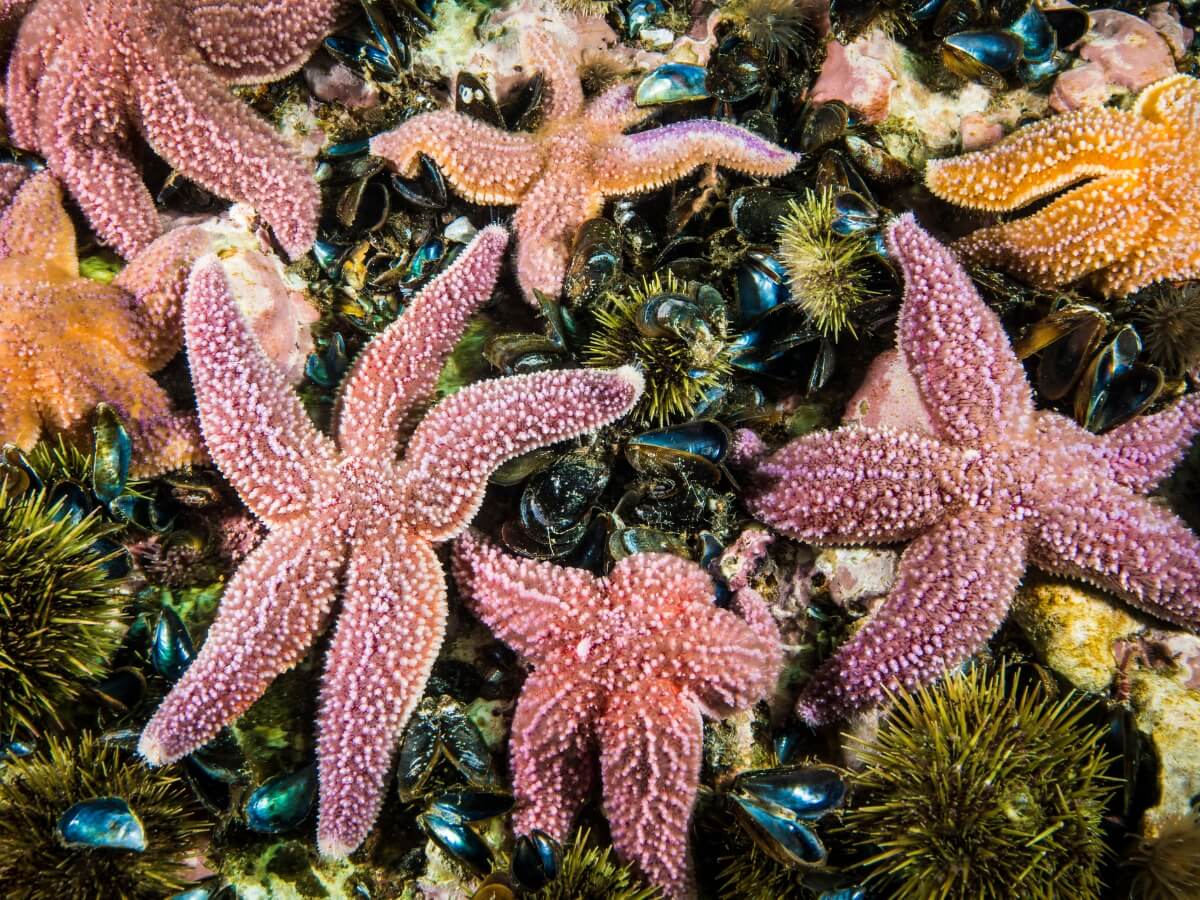
6. Notomyotida order
The tubed feet of these starfish are divided into series of four with suction cups at their ends, although certain species don’t have this characteristic. Its body has thin and sharp spines, with arms made up of muscular bands that are very flexible.
Its disc is a bit small, with the presence of 5 rays, and the pedicellars have different shapes, such as valvate or thorn shapes. Another characteristic of this order is that it inhabits deep waters. The taxon Notomyotida is also formed by a single family, Benthopectinidae, which has 12 genera and approximately 75 species, among which the following stand out:
- Pectinaster agassizi
- Acontiaster bandanus
- Myonotus intermedius
- Benthopecten acanthonotus
- Cheiraster echinulatus
7. Velatida order
This order of starfish is identified by a robust body with large discs. Depending on the species, these invertebrates have between 5 and 15 arms, where many have an underdeveloped skeleton. There are small individuals between 0.5 and 2 centimeters and others up to 30 centimeters. Regarding its habitat, this order prefers deep waters.
The arms are 5 to 15 centimeters apart and the tubed feet are in even series, generally having a highly developed suction cup. On the other hand, pedicellars are usually absent, but they do have them; they’re distributed in groups of spines. The Velatida order is made up of 5 families, 25 genera and 200 species, such as these:
- Euretaster attenuatus
- Belyaevostella hispida
- Asthenactis australis
- Caymanostella phorcynis
- Korethraster hispidus
Other species of starfish
Starfish play a very important role in marine ecosystems. Unfortunately, they have a greater susceptibility to chemical agents, as they easily filter toxins that enter the oceans to a greater extent, due to global water pollution.
It’s common to see some species of starfish near tourist beaches, where visitors take them out of the water and don’t realize the damage they cause to the starfish, as it can’t breathe out of the water. Other species of starfish, threatened or not, are as follows:
- Red starfish (Echinaster sepositus)
- Honduran star (Luidia ciliaris)
- Common spiny star (Marthasterias glacialis)
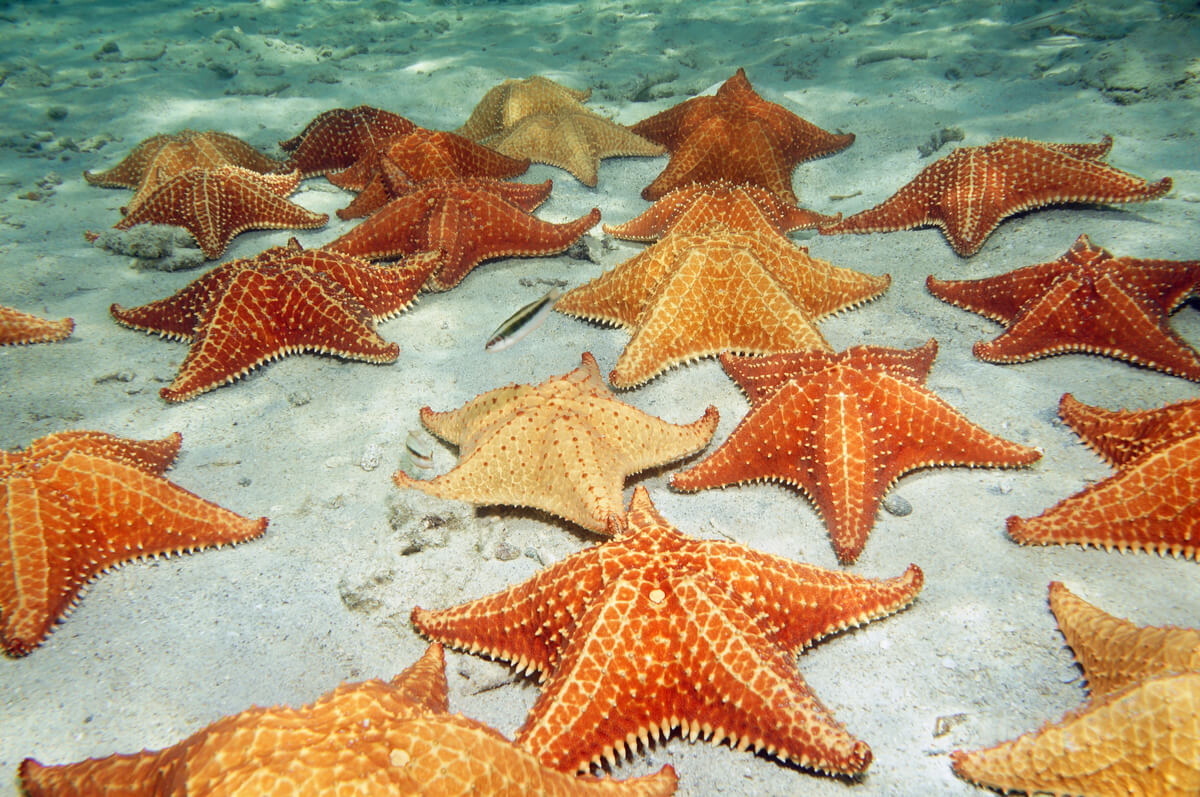
As you can see, there are different species and types of starfish and they differ from one to another due to their arms, feet and the depth they live in. It’s also evident that they have spines or other physical features that help identify the species, although, at first glance, most starfish are similar to the naked eye.
Starfish (Asteroidea) are part of the echinoderms, marine animals characterized by an internal skeleton, formed by a pentagonal disk with five arms. This taxon comprises more than 1900 species, distributed in 7 orders or types of starfish, and different families, all with unique characteristics.
Starfish are well known marine species, as they have a very curious way of moving and reproducing. Starfish have the peculiarity of regenerating their arms in most cases and have been used in research in order for experts to understand this behavior. Next up, you’ll meet various orders and species of starfish.
1. Valvatida order
It’s noteworthy that most of the starfish of this order have five arms. These are tubular in shape and feature a row of tube feet and conspicuous ossicles – individual structures. The latter are formations embedded in the dermis, which give the stars greater protection and rigidity.
On the other hand, this order of starfish has pedicellars and paxilas in its structure. A paxila is a structure that’s shaped like an umbrella, whose function is to protect the species of this order, preventing the area where the animal feeds and breathes from being obstructed with sand.
This is one of the most diverse types of starfish, as its specimens are characterized by measuring from a few millimeters to 75 centimeters. Likewise, it’s a very diverse order which has no exact taxonomy, which includes around 14 families and 600 species, within which the following stand out:
- Heterozonias alternatus
- Protoreaster nodosus
- Linckia guildingi
- Diabocilla clarki
- Pentaster obtusatus

2. Paxillosida order
Another type of star is the Paxillosida order, which is characterized by its species having five or more arms, with which they manage to dig into the sandy bottom of the sea. Physically, these invertebrates have tube-shaped tube feet, which have numerous rudimentary suckers.
Also, the upper skeletal surface of your body has small granule-like structures. We can’t specify a definite depth that this order lives at because that depends on the species; moreover, some specimens can live near the surface. The order Paxillosida is divided into 8 families, 46 genera, and more than 250 species, such as the following:
- Luidia bellonae
- Ctenodiscus australis
- Abyssaster planus
- Gephyreaster Fisher
- Astropecten acanthifer

3. Spinulosida order
The members of this order have relatively delicate bodies and as a distinctive feature they lack pedicellars. The aboral area – opposite the mouth – is covered with numerous spines that vary from one species to another, both in size and in shape and arrangement.
These types of starfish usually have a small disk with 5 rays in a cylindrical shape and the tube feet have suction cups. The habitat of these individuals varies between intertidal zones or deep waters as well as polar, temperate, or tropical regions. This order of starfish recognizes the Echinasteridae family, 8 genera and more than 100 species, such as these:
- Odontohenricia violaceous
- Echinaster colemani
- Rhopiella hirsuta
- Henricia sanguinolenta
- Metrodira subulata

4. Brisingida order
In this order of starfish, we find only those that inhabit the bottom of the seabed, between 1800 and 2400 meters deep. Although they have a presence in different regions, they prefer the waters of the Caribbean, the Pacific Ocean and New Zealand. It is common to find them on cliffs and areas of constant ocean currents.
These starfish feed by filtration, through long arms with needle-shaped spines – they can have between 6 and 20. They also have a flexible disk located in their mouth. The Brisingida order is made up of 2 families: Brisingidae and Freyellidae, with a total of 16 genera and more than 100 species. Some of these are as follows:
- Freyella elegans
- Colpaster edwardsi
- Brisinga endecacemon
- American novodina
- Hymenodiscus coronata
5. Forcipulatida order
One of the easiest types of starfish to identify is the Forcipulatida order which is characterized by the animal’s body having pincer-shaped structures that open and close. These are called pedicellaries and are made up of a short stem, with 3 skeletal parts.
The tubed feet, arranged in the lower area of the body of the starfish, have flat-tipped suckers, which allow the invertebrate to move on the seabed. Its arms are robust, with 5 or more rays. These starfish have a global presence in cold, tropical waters.
The Forcipulatida order is considered to be made up of 7 families, more than 60 genera and approximately 300 species. The common starfish (Asterias rubens ) is one of the best known species and the following can also be found in this group.
- Bythiolophus acanthinus
- Coscinasterias tenuispina
- Allostichaster capensis
- Labidiaster annulatus
- Ampheraster alaminos

6. Notomyotida order
The tubed feet of these starfish are divided into series of four with suction cups at their ends, although certain species don’t have this characteristic. Its body has thin and sharp spines, with arms made up of muscular bands that are very flexible.
Its disc is a bit small, with the presence of 5 rays, and the pedicellars have different shapes, such as valvate or thorn shapes. Another characteristic of this order is that it inhabits deep waters. The taxon Notomyotida is also formed by a single family, Benthopectinidae, which has 12 genera and approximately 75 species, among which the following stand out:
- Pectinaster agassizi
- Acontiaster bandanus
- Myonotus intermedius
- Benthopecten acanthonotus
- Cheiraster echinulatus
7. Velatida order
This order of starfish is identified by a robust body with large discs. Depending on the species, these invertebrates have between 5 and 15 arms, where many have an underdeveloped skeleton. There are small individuals between 0.5 and 2 centimeters and others up to 30 centimeters. Regarding its habitat, this order prefers deep waters.
The arms are 5 to 15 centimeters apart and the tubed feet are in even series, generally having a highly developed suction cup. On the other hand, pedicellars are usually absent, but they do have them; they’re distributed in groups of spines. The Velatida order is made up of 5 families, 25 genera and 200 species, such as these:
- Euretaster attenuatus
- Belyaevostella hispida
- Asthenactis australis
- Caymanostella phorcynis
- Korethraster hispidus
Other species of starfish
Starfish play a very important role in marine ecosystems. Unfortunately, they have a greater susceptibility to chemical agents, as they easily filter toxins that enter the oceans to a greater extent, due to global water pollution.
It’s common to see some species of starfish near tourist beaches, where visitors take them out of the water and don’t realize the damage they cause to the starfish, as it can’t breathe out of the water. Other species of starfish, threatened or not, are as follows:
- Red starfish (Echinaster sepositus)
- Honduran star (Luidia ciliaris)
- Common spiny star (Marthasterias glacialis)

As you can see, there are different species and types of starfish and they differ from one to another due to their arms, feet and the depth they live in. It’s also evident that they have spines or other physical features that help identify the species, although, at first glance, most starfish are similar to the naked eye.
All cited sources were thoroughly reviewed by our team to ensure their quality, reliability, currency, and validity. The bibliography of this article was considered reliable and of academic or scientific accuracy.
- Rivera, Y. C., Hernández, R. I., del Angel, P. S. M., Meza, E. Z., & González, R. C. (2016). Potencial regenerativo de la estrella de mar Linckia guildinguii. Hidrobiológica, 26(1), 103-108. Recogido el 24 de mayo de 2021 de: https://www.redalyc.org/pdf/578/57848293013.pdf
- Lee, T., & Shin, S. (2020). Complete mitochondrial genome of Henricia pachyderma (Asteroidea, Spinulosida, Echinasteridae) and phylogenetic analysis. Mitochondrial DNA Part B, 5(2), 1483-1484. Recogido el 24 de mayo de 2021 de: https://www.tandfonline.com/doi/pdf/10.1080/23802359.2020.1742231?needAccess=true
This text is provided for informational purposes only and does not replace consultation with a professional. If in doubt, consult your specialist.








